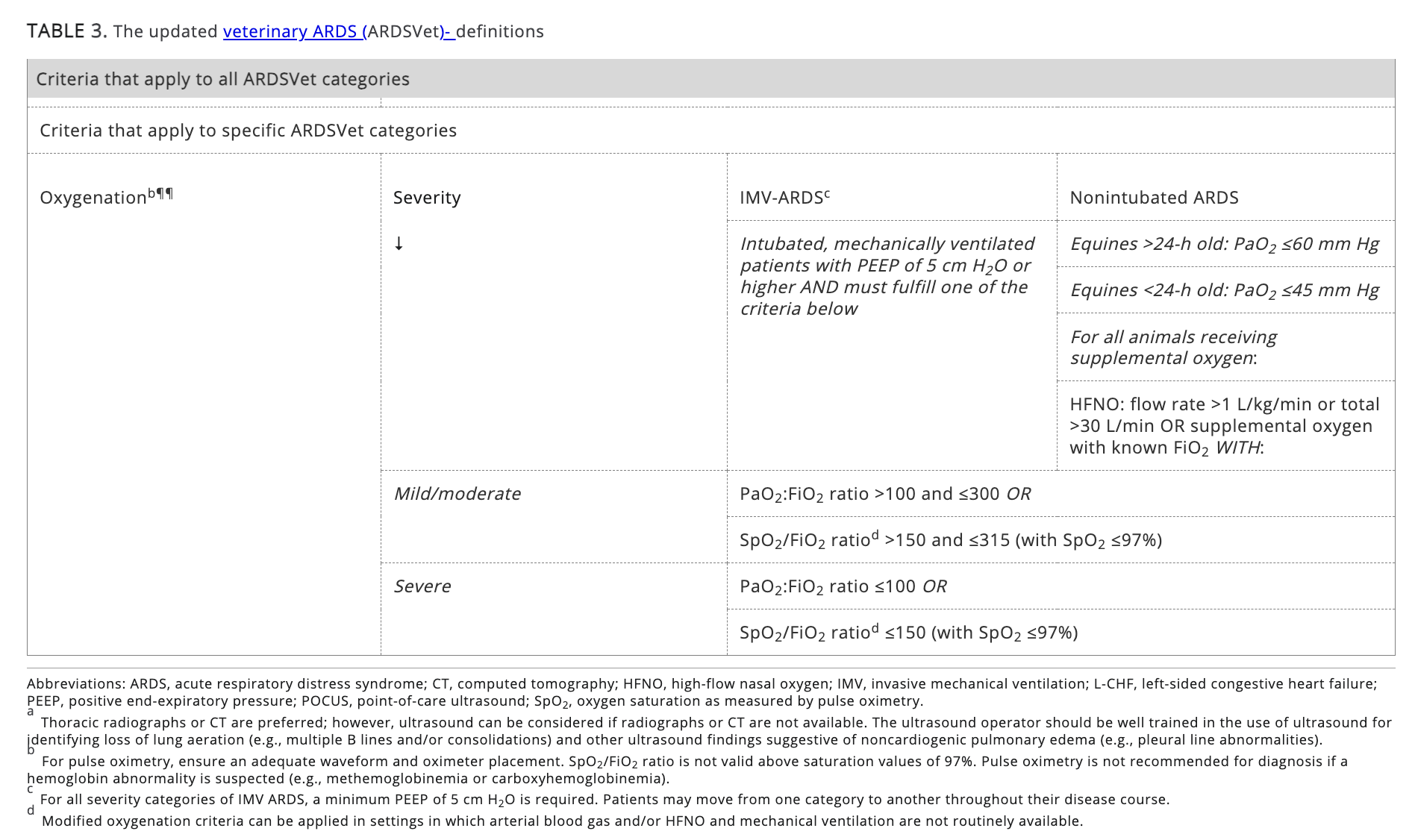Meet The Author
October 2025
Anusha Balakrishnan BVSc, DACVECC
I grew up and went to veterinary school in India before moving to the US for additional ECC training. After a stint in academia, I now work at the Veterinary Emergency Group as an educator creating training programs for emergency doctors, which is such a fulfilling role!
Acute Respiratory Distress Syndrome in Veterinary Medicine-The ARDSVet Definitions
Balakrishnan A, Silverstein DC, Bedenice D, Bersenas A, Bourgeois JP, Carroll CL, Dunkel B, Greensmith T, Hopper K, Lascola K, Mangalmurti N, Rozanski E, Wilkins P, Yehya N
The Rationale
The prior veterinary ARDS definitions (2007 Havemeyer definitions) were a much needed step in the right direction towards defining acute lung injury and ARDS in veterinary medicine. Much has changed with our understanding of this disease in humans (especially since the COVID-19 pandemic) and veterinary medicine. Additionally, the widespread use of POCUS as well as less invasive forms of respiratory support such as high flow nasal oxygen in veterinary medicine led to the need for a renewed look at these definitions to incorporate these advancements.
The Process
A systematic review of the literature was carried out for ARDS and acute lung injury in veterinary medicine. Updated definitions of ARDS were generated based on synthesis of human and veterinary literature. Consensus on the definitions was achieved through Delphi-style surveys involving the subject matter experts in the Working Group. Draft recommendations were made available through industry specialty listservs for feedback (ACVECC, ECVECC, ACVIM, JAVECCS, VCRS), which was incorporated in the final definitions.
There were no notable challenges per se in achieving alignment; although the group did have to extrapolate some aspects of the definitions from human medicine due to the paucity of evidence in veterinary medicine (such as precise cut-offs for SpO2/FiO2 ratios for the various severity thresholds). Our hope is that this will form the basis for future research that will then allow for these definitions to be refined in the future.
Key Recommendations
I would say the inclusion of point-of-care lung ultrasound (lung POCUS) is a major change, and one that will hopefully allow more practioners to diagnose ARDS (when combining POCUS findings with other criteria) more easily in unstable patients where thoracic radiography is challenging.
Additionally, the classification of ARDS into the categories of "at-risk", "non-intubated ARDS" and "IMV-ARDS" allows for various patient populations to get captured in the definitions, whether or not they are able to undergo invasive mechanical ventilation- this allows for capturing data pertinent to mechanical ventilation settings, without excluding those patients where ventilation is not possible due to logistics or finances or other limitations.
Acute Respiratory Distress Syndrome in Veterinary Medicine-The ARDSVet Definitions. J Vet Emerg Crit Care (San Antonio). 2025 Jul-Aug;35(4):327-338. doi: 10.1111/vec.70016. Epub 2025 Aug 21
Implementation Considerations
Differences in resource availability was a key consideration when designing these guidelines, which is why there is a part II that will soon be published in JVECC- this highlights clinical application of these guidelines with one large animal and one small animal case example. Our hope is that these examples will make it clear how to practically apply these guidelines, as well as illustrate how a patient may move from one category to another during their disease process.
Looking Forward
So many possibilities here!
We outlined in the manuscript a section of potential future areas of research and key knowledge gaps identified by the Working Group:
1. Evaluation of the sensitivity and specificity of point-of-care lung ultrasound diagnosis of veterinary ARDS in different species among operators with varied training in diverse clinical settings using different acquisition/interpretation protocols.
2. Evaluation of the role of subphenotypes of ARDS and both diagnostic and prognostic biomarkers that may aid in clinical decision-making. 3. Therapeutic interventions in veterinary ARDS:
* Evaluation of HFNO machine settings and outcomes inARDS
* Mechanical ventilation in veterinary ARDS: evaluation of OI and OSI, driving pressures as a therapeutic target, and evaluation of outcome differences between different modes of mechanical ventilation
* Pharmacotherapies in veterinary ARDS: glucocorticoids, bronchodilators, furosemide, and other therapeutic agents
4. Evaluation of epidemiology and long-term outcomes in patients diagnosed with ARDS across diverse resource settings utilizing the updated veterinary ARDS definitions through the creation of a veterinary ARDS registry



